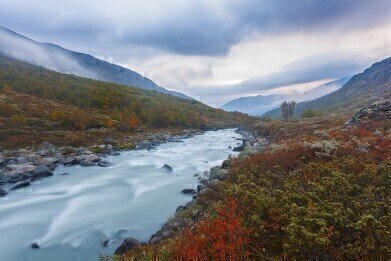Water/Wastewater
What Is Classed as a River Catchment?
Nov 02 2022
The term “river catchment” is used to refer to any lower-lying region in which water collects from the higher areas above it. Catchments are generally centred around a body of water, such as a stream, river or lake, into which they drain the water they collect from above. This water can be produced through precipitation, snowmelt or thawing glaciers, among other sources.
River catchments are often surrounded by hills or mountains, since they require higher ground in close proximity in order to collect the flowing water. In recent years, there has been an increase in the amount of attention that is paid to river catchment monitoring by the environmental and scientific communities, since there is much that these areas of land can teach us about water quantity and quality.
The significance of river catchments
Historically, river catchments have served as natural boundaries via which territories can be divided among countries, regions and landowners. The plentiful water they provide has meant that urban epicentres have often been established in their vicinity, while the fertile ground surrounding them is an ideal place to conduct agricultural activities.
More recently, the kinetic energy involved in the flowing of the water has been leveraged by power companies, who install hydroelectric dams in river catchments to take advantage of this sustainable source of energy. They’re also highly prized as areas of natural beauty and often foster myriad lifeforms of both plant and animal varieties.
River catchment pollution
Unfortunately, humans haven’t always recognised the importance of river catchments, nor have we understood the full and far-reaching ramifications of our own actions. The Industrial Revolution has been transformational in terms of the scientific and technological advances we have made over the last 200 years, but it has resulted in significant amounts of pollution being inflicted on river catchments and their surrounding areas.
When chemicals, toxins and heavy metals are allowed to leach into these natural ecosystems, they can endanger the lives of the flora and fauna living there. For example, agricultural run-off can carry substances such as ammonia and phosphate into river catchments, unbalancing nutrient levels and impacting different species in different (and sometimes devastating) ways. Meanwhile, there are other contaminants and chemicals about which we know very little and their long-term effects are not yet understood.
How can we conserve river catchments?
Although significant damage has been wrought on river catchment water quality across the centuries, we are now thankfully beginning to pay attention to the conservation of these vital natural resources. Those efforts begin with high-resolution monitoring techniques, which can help to quantify the concentrations of various substances within the river and ensure that the quality of the water is not compromised.
Meanwhile, other government initiatives – such as preventing industrial installations from being situated too close to river catchments so as to create a buffer between human activity and the natural fragility – are imperative to the conservation of river catchments. Planting trees and fostering reed beds are other ways of combating soil erosion and reducing sediment content in the catchment, too.
Digital Edition
IET 34.2 March 2024
April 2024
Gas Detection - Biogas batch fermentation system for laboratory use with automatic gas analysis in real time Water/Wastewater - Upcycling sensors for sustainable nature management - Prist...
View all digital editions
Events
Apr 30 2024 Melbourne, Australia
Apr 30 2024 Birmingham, UK
May 03 2024 Seoul, South Korea
May 05 2024 Seville, Spain
May 06 2024 Minneapolis, MN, USA


















